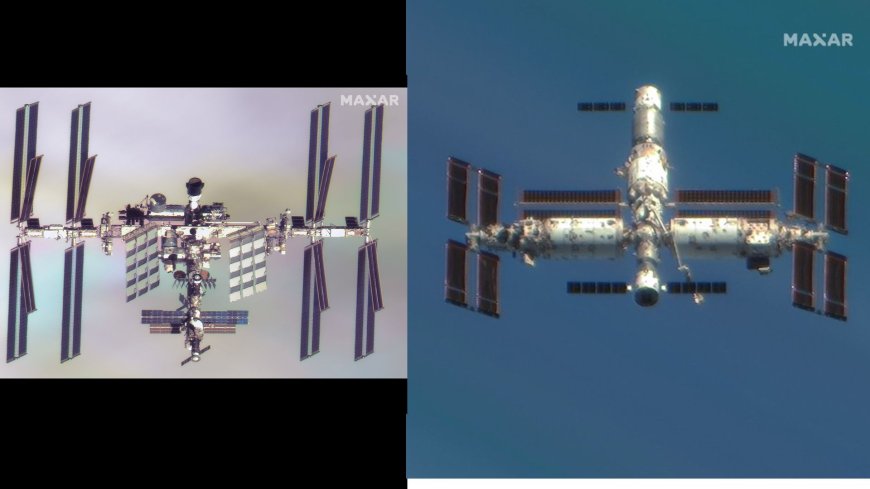Satellite Captures Stunning Photos of ISS and China's Tiangong Space Station on July 4, 2025
Discover how the International Space Station (ISS) and China's Tiangong Space Station are revolutionizing space research. Learn about their history, purpose, and significance as key players in space exploration. Explore the incredible images captured by a Maxar satellite from low-Earth orbit.

Since 1998, the International Space Station (ISS) has provided a platform for astronauts worldwide to conduct experiments in space, ranging from growing food to studying the effects of low-Earth orbit on the human body.
Recently, the Chinese Tiangong Space Station was fully assembled with its third module, the Mengtian, added on Oct. 31, 2022. Tiangong is positioned at the same altitude as the ISS.
What is it?
The ISS is a collaborative effort involving NASA, Roscosmos, ESA, JAXA, and other organizations. It has been continuously inhabited since 2000 and serves as a research laboratory for studies in biology, physics, medicine, and earth sciences. The ISS is larger than the Tiangong Space Station, with 16 modules compared to Tiangong's three.
China, not part of the ISS program, developed its own space station, Tiangong, showcasing the country's advancements in space exploration. Built by the Chinese Manned Space Agency (CMSA), Tiangong offers a research platform for countries outside the ISS program.
Where is it?
These images were captured from space, approximately 250 miles (402 km) above Earth.
Why is it remarkable?
The photos were taken by a Maxar WorldView Legion satellite in low-Earth orbit. Maxar Technologies highlighted the clarity of their satellite images capturing both space stations as they move in their orbits. The ability to photograph swiftly moving objects like the ISS and Tiangong demonstrates the timing and engineering prowess of the Maxar satellite.
For more information on the ISS, Tiangong Space Station, and observation satellites like Maxar's, explore further.
According to the source: Space.
What's Your Reaction?
 Like
0
Like
0
 Dislike
0
Dislike
0
 Love
0
Love
0
 Funny
0
Funny
0
 Angry
0
Angry
0
 Sad
0
Sad
0
 Wow
0
Wow
0








































































































































































